10 Best Values in Liberal Arts Colleges 2012-13
Liberal arts colleges focus on teaching undergraduates, rather than on research, and generally confer only bachelor\'s degrees.


Liberal arts colleges focus on teaching undergraduates, rather than on research, and generally confer only bachelor\'s degrees. They typically have smaller enrollments than universities.
All 100 schools on our list offer the academic quality and affordability that meet our definition of value, but these top ten liberal arts colleges stand above the rest for their ability to deliver a great education at a relatively low cost.
All post freshman retention rates (the percentage of freshmen who return for a second year) of 93% or above, sparing students the lost credits involved with transferring, and all have a four-year graduation rate of 87% or higher, meaning that most parents aren\'t springing for an extra year. Half of the schools offer enough need-based aid to reduce the annual net cost to less than $20,000.

10. Haverford College
Location: Haverford, Pa.
Undergraduate enrollment: 1,198
Total cost: $58,186
Average need-based aid: $37,515
Average net cost: $20,671
This small Quaker school, on a tranquil campus that includes an arboretum and a 3.5-acre duck pond, is one of three schools on our liberal arts list with a 91% four-year graduation rate. Haverford encourages the Quaker traditions of consensus -- a decision-making process that emphasizes inclusiveness -- and integrity. The student-run honor code allows students to take unsupervised exams and to live in dorms without resident advisors.
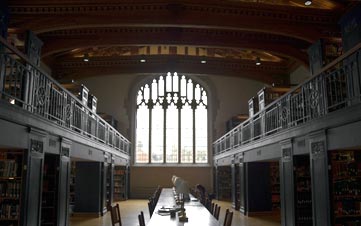
9. Vassar College
Location: Poughkeepsie, N.Y.
Undergraduate enrollment: 2,386
Total cost: $57,910
Average need-based aid: $38,285
Average net cost: $19,625
Vassar\'s high test scores (57% of incoming freshmen score over 700 on the verbal SAT, and 44% score over 700 on the math version), 98% freshman retention rate and strong four-year graduation rate (88%) make it a reliable member of our top ten, where it has appeared four times in the past five years. Two-thirds of students are awarded need-based financial aid. Students who borrow graduate with just over $18,000 in average debt, one-third less than the national average.

8. Davidson College
Location: Davidson, N.C.
Undergraduate enrollment: 1,756
Total cost: $53,155
Average need-based aid: $27,829
Average net cost: $25,326
Unlike most other top-ranked schools, Davidson awards non-need based aid, with an average award of nearly $20,000. The school\'s policy of replacing loans with grants to help reduce student debt means that only 22% of students, the lowest percentage on our list, borrow to finance their education. In addition to academics, the school focuses on leadership and community service. Its honor code gives students the freedom to schedule their own exams and take tests unsupervised.
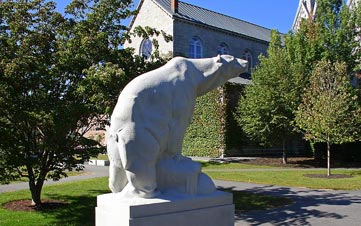
7. Bowdoin College
Location: Brunswick, Maine
Undergraduate enrollment: 1,778
Total cost: $56,950
Average need-based aid: $35,975
Average net cost: $20,975
One of the country\'s oldest liberal arts colleges, Bowdoin boasts an impressive collection of alumni, including U.S. President Franklin Pierce, Henry Wadsworth Longfellow and five members of Barack Obama\'s administration, including Christopher Hill, U.S. ambassador to Iraq. The school\'s 16% admission rate and high yield (nearly half of admitted students enroll) attest to the school\'s competitive strength.
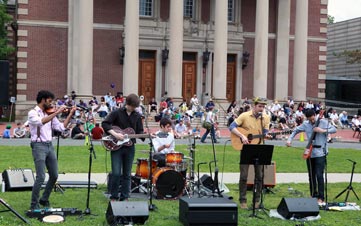
6. Williams College
Location: Williamstown, Mass.
Undergraduate enrollment: 2,053
Total cost: $57,570
Average need-based aid: $37,836
Average net cost: $19,734
This New England college routinely ranks near the top of our liberal arts list for its stellar academics, including a freshman retention rate of 97%, a four-year graduation rate of 89%, and a seven-to-one student-faculty ratio -- the lowest on our liberal arts list. Fewer than half of students at Williams borrow, and those who do take out loans graduate with an average debt of $8,801, the second-lowest among our top 100 liberal arts schools.
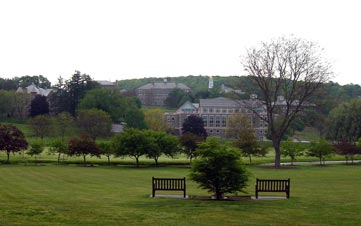
5. Colgate University
Location: Hamilton, N.Y.
Undergraduate enrollment: 2,947
Total cost: $56,755
Average need-based aid: $36,192
Average net cost: $20,563
Colgate jumped to our top ten this year from number 22 last year, thanks mostly to an increasingly competitive admission rate (29%, compared with 33% last year) and an improved four-year graduation rate (88%, up from 84%). A recent capital campaign raised $142 million for financial aid. Just over one-fourth of Colgate students borrow money to finance their education, compared with about two-thirds nationally. Average debt at graduation is $19,721, lower than the national average by almost one-third.
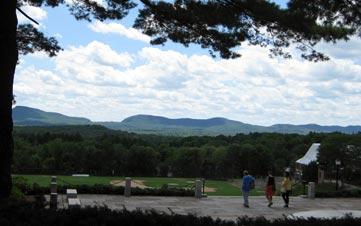
4. Amherst College
Location: Amherst, Mass.
Undergraduate enrollment: 1,791
Total cost: $55,098
Average need-based aid: $41,991
Average net cost: $13,107
Founded by Noah Webster and Samuel Fowler Dickinson (Emily Dickinson\'s grandfather), Amherst College has the second-most competitive admission rate on our list: Only 13% of applicants are accepted at this elite school. Amherst also digs deep to make its education affordable. More than 60% of students receive need-based aid, and the average undergraduate debt ($12,713) is less than half the national average. Through Amherst\'s Five Colleges\' association, students can take classes at Smith, Mount Holyoke, Hampshire College and the University of Massachusetts at Amherst, as well as at Amherst College.
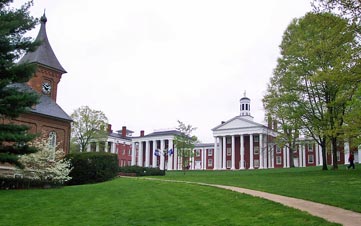
3. Washington and Lee University
Location: Lexington, Va.
Undergraduate enrollment: 1,790
Total cost: $54,612
Average need-based aid: $35,834
Average net cost: $18,778
With high test scores among incoming freshmen (38% score above 700 on the verbal SAT, and 37% score above 700 on the math ), a nine-to-one student-faculty ratio, and an average class size of 16, plus a financial aid package that brings the average net cost below $20,000, Washington and Lee University has maintained its position on our top-ten list each year since 2007. The school has undergone several name changes since its 1749 founding; the current name pays homage to George Washington, who gave the school its first major endowment, and General Robert E. Lee, who served as president from 1865 until his death in 1870.
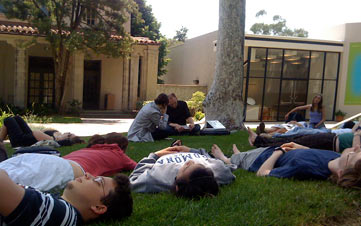
2. Pomona College
Location: Claremont, Cal.
Undergraduate enrollment: 1,586
Total cost: $55,864
Average need-based aid: $35,883
Average net cost: $19,981
This West Coast school is located within an hour of Los Angeles, the Pacific Ocean, the San Gabriel Mountains and the Mojave Desert. Its top academics include an impressive eight-to-one student-faculty ratio, a 14% admission rate and high test scores among incoming freshmen (69% score above 700 on the verbal SAT, and 70% score above 700 on the math). Pomona also boasts the highest freshman retention rate on our liberal arts list -- all but 1% of first-year students return for their sophomore year -- and it ties with Swarthmore and Haverford for the highest four-year grad rate (91%).
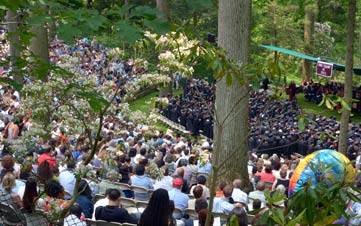
1. Swarthmore College
Location: Swarthmore, Pa.
Undergraduate enrollment: 1,545
Total cost: $56,930
Average need-based aid: $36,385
Average net cost: $20,545
At the top of our liberal arts list for the fourth time since 2007, this small school, founded by Quakers, emphasizes creativity and critical thinking skills. Swarthmore admits only 15% of applicants; 71% of incoming freshmen score 700 or more on their verbal SAT, and 62% score 700 or more on the math. Swarthmore is one of only three schools on our liberal arts list with a four-year graduation rate of 91%. It offers an eight-to-one student-faculty ratio.

Profit and prosper with the best of Kiplinger's advice on investing, taxes, retirement, personal finance and much more. Delivered daily. Enter your email in the box and click Sign Me Up.

-
 How to Protect Yourself and Others From a Troubled Adult Child
How to Protect Yourself and Others From a Troubled Adult ChildThis case of a violent adult son whose parents are in denial is an example of the extreme risks some parents face if they neglect essential safety precautions.
-
 To Build Client Relationships That Last, Embrace Simplicity
To Build Client Relationships That Last, Embrace SimplicityAs more automation becomes the norm, you can distinguish yourself as a financial professional by using technology wisely and prioritizing personal touches.
-
 Client Demand Is Forcing Advisers to Specialize: How to Deliver
Client Demand Is Forcing Advisers to Specialize: How to DeliverThe complexity of wealthy clients' needs — combined with AI and consumer demand — suggests the future of financial planning belongs to specialized experts.
-
 What to Do With Your Tax Refund: 6 Ways to Bring Growth
What to Do With Your Tax Refund: 6 Ways to Bring GrowthUse your 2024 tax refund to boost short-term or long-term financial goals by putting it in one of these six places.
-
 What Does Medicare Not Cover? Eight Things You Should Know
What Does Medicare Not Cover? Eight Things You Should KnowMedicare Part A and Part B leave gaps in your healthcare coverage. But Medicare Advantage has problems, too.
-
 15 Reasons You'll Regret an RV in Retirement
15 Reasons You'll Regret an RV in RetirementMaking Your Money Last Here's why you might regret an RV in retirement. RV-savvy retirees talk about the downsides of spending retirement in a motorhome, travel trailer, fifth wheel, or other recreational vehicle.
-
 The Six Best Places to Retire in New England
The Six Best Places to Retire in New Englandplaces to live Thinking about a move to New England for retirement? Here are the best places to land for quality of life, affordability and other criteria.
-
 The 10 Cheapest Countries to Visit
The 10 Cheapest Countries to VisitWe find the 10 cheapest countries to visit around the world. Forget inflation and set your sights on your next vacation.
-
 15 Ways to Prepare Your Home for Winter
15 Ways to Prepare Your Home for Winterhome There are many ways to prepare your home for winter, which will help keep you safe and warm and save on housing and utility costs.
-
 Six Steps to Get Lower Car Insurance Rates
Six Steps to Get Lower Car Insurance Ratesinsurance Shopping around for auto insurance may not be your idea of fun, but comparing prices for a new policy every few years — or even more often — can pay off big.
-
 How to Increase Credit Scores — Fast
How to Increase Credit Scores — FastHow to increase credit scores quickly, starting with paying down your credit card debt.
